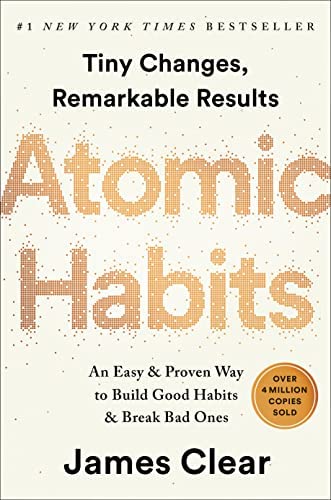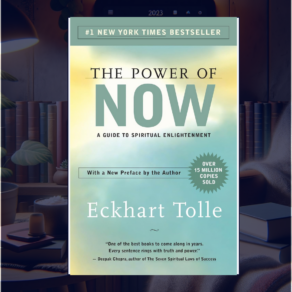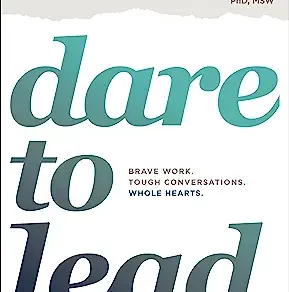“The Power of Habit: Why We Do What We Do in Life and Business” by Charles Duhigg is an enlightening exploration of the science behind our habits and how they shape our lives and society. He combines meticulously researched information with engaging stories from various domains, showing us the surprising power habits hold in influencing individual behavior, business dynamics, and social movements.
The book is divided into three sections: The Habits of Individuals, The Habits of Successful Organizations, and The Habits of Societies.
In “The Habits of Individuals,” Duhigg explores the neurology behind habits. He explains that a habit is essentially a three-part process that he refers to as the “habit loop.” It consists of a cue that triggers the habit, the routine (the habit itself), and the reward that comes from performing the routine. He gives examples like the habit of smoking where the cue might be stress, the routine is lighting up a cigarette, and the reward is the relief from stress. This loop is reinforced each time it’s completed, making the habit stronger and more automatic.
Duhigg suggests that while we can’t delete habits, we can replace the routine within the habit loop, a process he refers to as “habit reversal training.” This concept is demonstrated through the story of a woman who quit smoking and started running, eventually competing in marathons. Her cue (stress) and reward (relief from stress) remained the same, but she changed her routine to a healthier one—running.
In the second section, “The Habits of Successful Organizations,” Duhigg applies the concept of habits to the world of business. He discusses how businesses can engineer habit loops to influence consumer behavior. One prominent example is Procter & Gamble’s marketing of Febreze. Initially, it didn’t sell well because people didn’t have a habit of using it. P&G then decided to market it as a reward (a pleasant smell), creating a habit loop for consumers that led to Febreze becoming one of P&G’s top-selling products.
Another essential concept introduced in this section is “keystone habits”—those habits that, when changed, cause a domino effect, changing other habits along the way. This idea is illustrated with the story of Paul O’Neill at Alcoa, where he focused on one keystone habit, safety, resulting in increased productivity and profitability.
The final section, “The Habits of Societies,” expands the discussion to societal habits. Duhigg illustrates how social movements can utilize habit power to create widespread change, using the example of the civil rights movement led by Martin Luther King Jr. It showcases how understanding and influencing collective habits can lead to powerful societal shifts.
Overall, “The Power of Habit” provides us with an insight into the hidden patterns that shape our lives. It elucidates that by understanding how habits work, we can manipulate them to foster personal growth, enhance organizational success, and trigger meaningful social change. Duhigg’s compelling argument is that harnessing the power of habits can ultimately lead to transformation on all scales—from individual lives to the broader realms of business and society.
For the audiobook fans among you, here the Audiobook version of The Power of Habits.
The Power of Habit Quotes
Here are some insightful quotes that stood out to me from reading The Power of Habit:
1. If you believe you can change – if you make it a habit – the change becomes real.
2. The Golden Rule of Habit Change: You can’t extinguish a bad habit, you can only change it.
3. Most of the choices we make each day may feel like the products of well-considered decision making, but they’re not. They’re habits.
4. Change might not be fast and it isn’t always easy. But with time and effort, almost any habit can be reshaped.
5. Cravings are what drive habits. And figuring out how to spark a craving makes creating a new habit easier.
6. When a habit emerges, the brain stops fully participating in decision making. It stops working so hard, or diverts focus to other tasks. So unless you deliberately fight a habit — unless you find new routines — the pattern will unfold automatically.
7. If you tell people that they have what it takes to succeed, they’ll prove you right.
8. This is the real power of habit: the insight that your habits are what you choose them to be.
9. It is facile to imply that smoking, alcoholism, overeating, or other ingrained patters can be upended without real effort. Genuine change requires work and self-understanding of the cravings driving behaviours.
10. Once you understand that habits can change, you have the freedom and the responsibility to remake them. Once you understand that habits can be rebuilt, the power of habit becomes easier to grasp and the only option left is to get to work.
11. Champions don’t do extraordinary things. They do ordinary things, but they do them without thinking, too fast for the other team to react. They follow the habits they’ve learned.
The Power of Habit Vs Atomic Habit?
“The Power of Habit” by Charles Duhigg and “Atomic Habits” by James Clear are both highly influential books that delve into the science of habits. They share a common premise of understanding habits to enhance personal and professional growth, but they approach the subject with different perspectives and offer varied insights.
- “The Power of Habit”: Charles Duhigg’s book primarily focuses on the ‘habit loop’—a three-step process involving a cue, routine, and reward. He outlines how habits work at individual, organizational, and societal levels. Duhigg emphasizes that we cannot erase bad habits, but we can modify them by identifying the cue and reward, then changing the routine. He also introduces the concept of ‘keystone habits’, those powerful habits that trigger a cascade of other habits. Duhigg provides numerous anecdotes from the business world, individuals, and societal movements to illustrate his points.
- “Atomic Habits“: James Clear’s book offers a more practical and actionable approach to habit change, and is highly focused on the individual level. He proposes the idea of making small, 1% improvements each day to achieve remarkable results in the long run, hence the term ‘atomic’ (tiny) habits. Clear presents a four-step model for building good habits and breaking bad ones: Cue, Craving, Response, and Reward. He emphasizes making new habits obvious, attractive, easy, and satisfying while making bad habits the opposite. He also discusses habit stacking (building a new habit onto an existing one) and the importance of identity in shaping habits.
In summary, “The Power of Habit” is more theory-based and wide-ranging, while “Atomic Habits” provides more practical strategies and tools for personal habit change. Both books complement each other and offer valuable insights into the world of habits. Depending on what you’re looking for – a comprehensive understanding of habits or actionable steps for habit change – you might prefer one over the other.
I hope you find the Power of Habit summary helpful!







